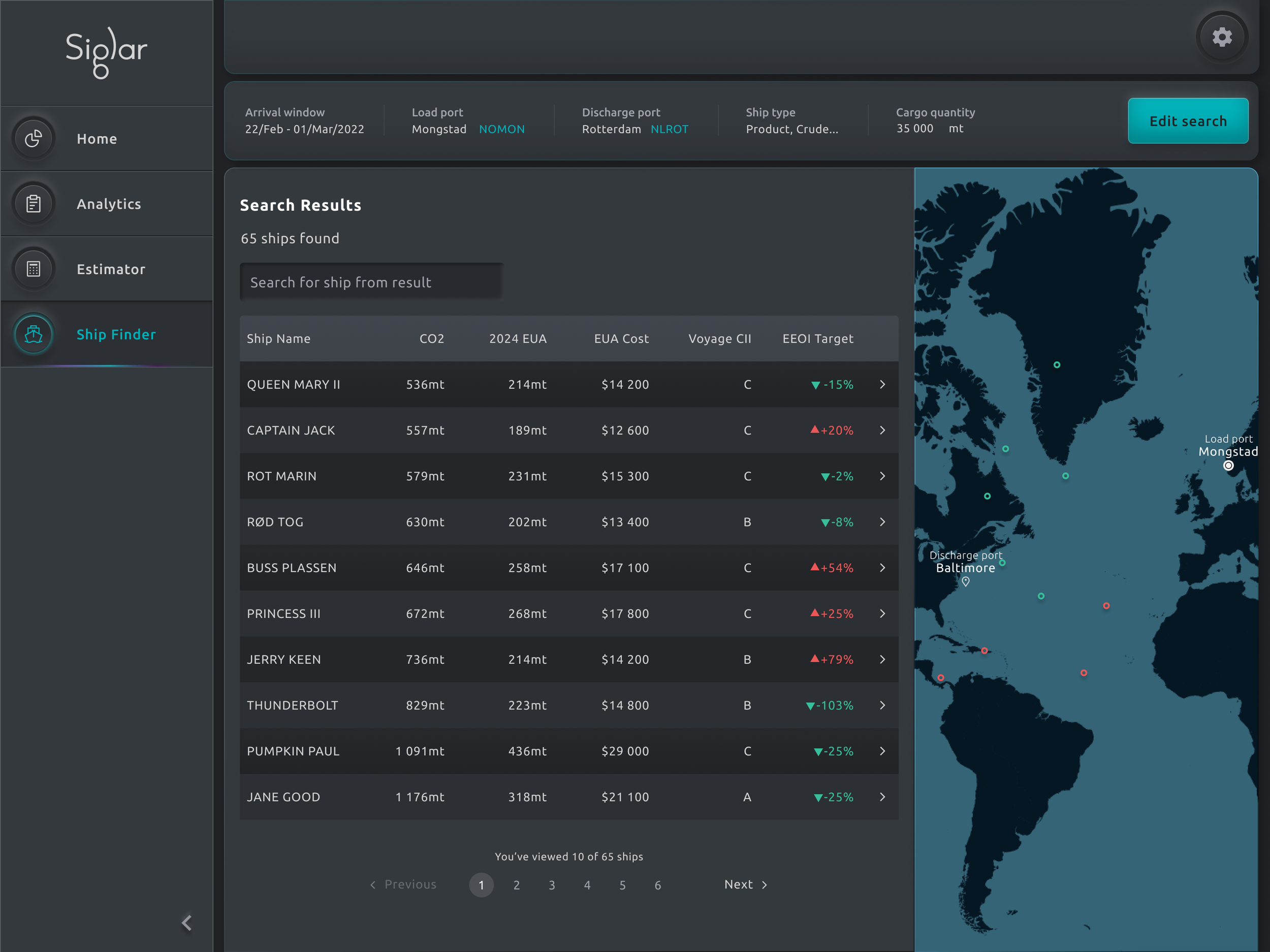
My Role
Research & Analysis
User Experience
User Interface Design
Product Design
Design System
Product Strategy
The Team
1 product designer
1 product owner
2 frontend developers
2 backend developers
Problem Statement
A B2B product that seeks to find the most carbon-efficient ships for transportation of cargo.
My team and I were assigned the responsibility of developing a product from conceptualization to its official release. This involved formulating strategies and conducting research on the target audience, defining key performance indicators (KPIs), outlining a minimum viable product (MVP) roadmap, testing proposed features, and crafting a design system to facilitate swift iterations.
Background
Ship Finder allows charterers to compare carbon emissions from ships in the spot market and incorporate that emissions data into their decision-making before fixing a voyage.
Default page for data entry to start a search
Result page showcasing available ships for a voyage
Preliminary research
Who is the User?
User interviews
Detailed view of ship and voyage details including route selection and speed adjustment
The shipping industry stands for 2-3% of the total CO2 emissions in the world (940 million tonnes, and oil and gas shipping is estimated to stand for 220 million tonnes). In order to reduce the overall CO2 emission in line with the International Maritime Organisation's (IMO) commitment to reduce CO2 emissions in international shipping by at least 40% by 2030, and 70% by 2050, compared to 2008, the shipping industry has to find ways to reduce the CO2 emissions emitted during their voyages.
How might we sustainably empower the shipping industry to reduce its carbon footprint by 40% by 2030?
The shipping industry is expansive, encompassing various stakeholders with diverse interests. Despite these differences, they are all subject to the same regulations set by the International Maritime Organization (IMO). The key players in a chartering process include ship owners, ship brokers, and charterers.
Ship owners are responsible for the vessels employed in transporting goods, holding ownership and operational control. Acting as intermediaries between ship owners and charterers, ship brokers play a crucial role. They maintain a comprehensive position list of all the ships in their portfolio, providing valuable information to facilitate transactions.
Charterers, on the other hand, are the entities that possess the goods being transported by the vessel. They wield significant influence in determining the vessel's destination and play a pivotal role in the calculation of CO2 emissions for a particular voyage.
In essence, these three groups collectively navigate the complex world of shipping, guided by the common framework established by the IMO.
Given the different user groups and their characteristics and impact on the chartering process, setting them into primary and secondary audiences is imperative. The primary audience directly impacts reducing the CO2 emissions on voyages, which happens to be the Charterer. However, the role of the ship owner and broker cannot be relegated as they also play their roles in the value chain.
We kicked off a comprehensive research process by having user interviews with each audience in the chartering process. In total, we had 10 participants across the three users sharing their experiences and insights.
Key Takeaways
While charterers understand the need for CO2 emission reduction,
they are not sure how to go about it.There is no common carbon language in the shipping industry
Brokers are not sure how they are performing compared to the market, which makes it difficult to market their CO2 performance.
Charterers do not have a ready-made tool to advise them on cutting emissions on their future voyages
Ship owners want to maximise the potential of their CO2-efficient ship
There are scenarios where the charterer and ship owner are from the same parent company but operate under different names, therefore eliminating the need for a broker.
Products transported generally have different densities and this affects how emissions are calculated.






